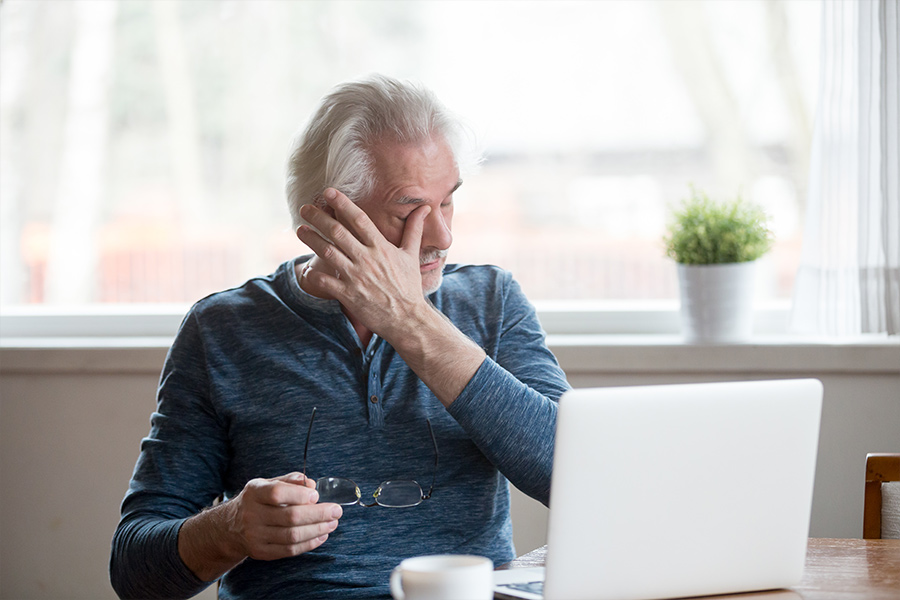
Why your eyes get drier as you get older (and what you can do about it)
Do you feel like your eyes are getting drier with every birthday? You’re not imagining it. Dry eye is more common after 40 and becomes increasingly likely as we get older. But understanding why this happens and what you can do about it can make a huge difference to your comfort and quality of life.
Why dry eye becomes more common with age
Your eyes rely on a healthy tear film to stay moist, nourished, and clear. This tear film has three layers:
- Oil layer: Prevents tears from evaporating too quickly
- Water layer: Keeps eyes hydrated
- Mucus layer: Spreads tears evenly over the surface of the eye.
As we age, this tear film can become less stable. Reasons include:
- Hormonal changes: Particularly around menopause, which can reduce tear production
- Eyelid changes: The glands that produce oils can become blocked or less active
- Reduced blinking: Blinking spreads tears across your eyes, and we tend to blink less with age
- Medical conditions: Diabetes, thyroid issues, and arthritis are more common in midlife and can contribute to dry eye
- Medications: Antihistamines, blood pressure medication, and antidepressants can all reduce tear production.
Common symptoms of age-related dry eye
You might notice:
- Grittiness or a feeling like something is in your eye
- Redness or irritation
- Blurred vision that improves after blinking
- Watery eyes (yes, excessive tearing can actually be a sign of dryness)
- Sensitivity to wind, smoke, or air conditioning.
Why treating dry eye matters
Dry eye isn’t just uncomfortable. Left untreated, it can:
- Cause eye strain and headaches
- Make reading or using screens difficult
- Increase risk of infection
- Affect your quality of life.
What you can do about it
The good news? There are lots of ways to manage and even improve dry eye symptoms.
- Artificial tears
Over-the-counter lubricating drops can provide relief. Use preservative-free options if you need them frequently. - Warm compresses
Applying a warm compress to your eyelids can help unblock oil glands and improve tear quality. - Lid hygiene
Cleaning your eyelids with a gentle wipe can reduce inflammation and bacteria around the lashes. - Omega-3 supplements
Some studies suggest omega-3 fatty acids can improve tear quality. - Adjust your environment
- Use a humidifier if your home is dry
- Avoid direct air blowing on your face
- Wear wraparound sunglasses outdoors
- Blink more often
Especially when reading or using screens. Try the 20-20-20 rule: every 20 minutes, look 20 feet away for 20 seconds. - Professional treatment
If home remedies aren’t enough, your eye doctor can offer in-office treatments such as prescription eye drops, punctal plugs, or light therapy for the glands.
When to see a professional
If your symptoms are persistent, painful, or affecting your vision, it’s time for an eye exam. Early treatment can prevent complications and keep your eyes healthy.
The bottom line
Dry eye may be more common as you get older, but you don’t have to live with constant discomfort. There are effective treatments to restore comfort and clarity.
Next steps
Take our free self-test to see if you might benefit from a dry eye assessment. Relief could be closer than you think.
How bad are your dry eyes?
Take this quick self-test to check how severe your symptoms are and see what help you might need next




